Pioneer Building and Pioneer Square Neighborhood
Introduction
Text-to-speech Audio
Images
The Pioneer Building as seen from 1st Avenue.
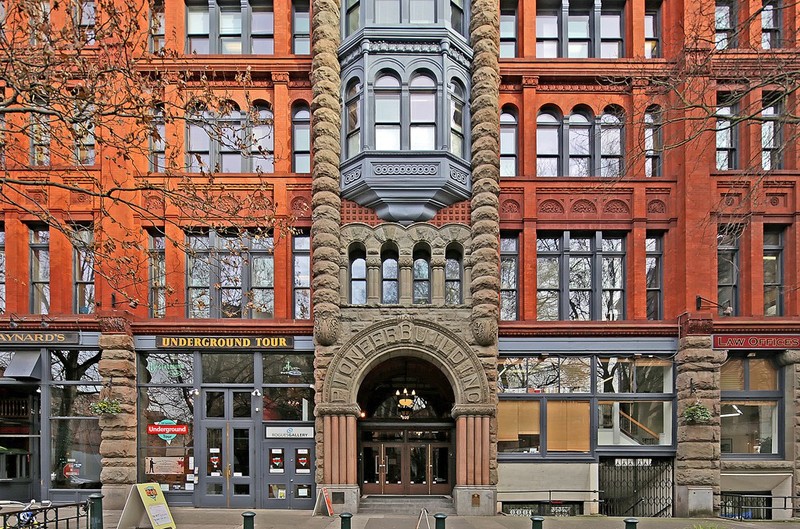
Pioneer Square Building
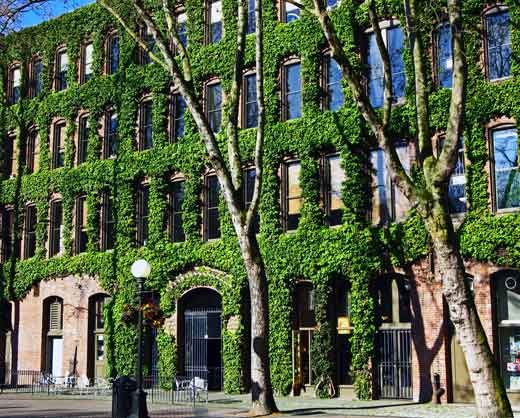
Pioneer Square Waterfall Park
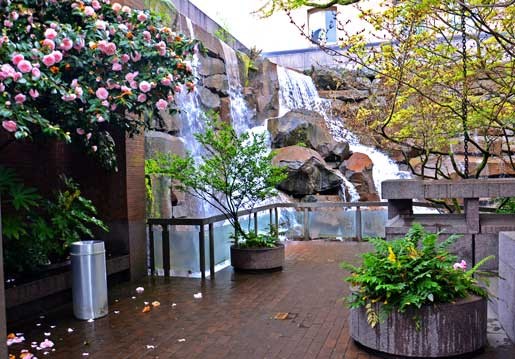
Pioneer Square Pergola
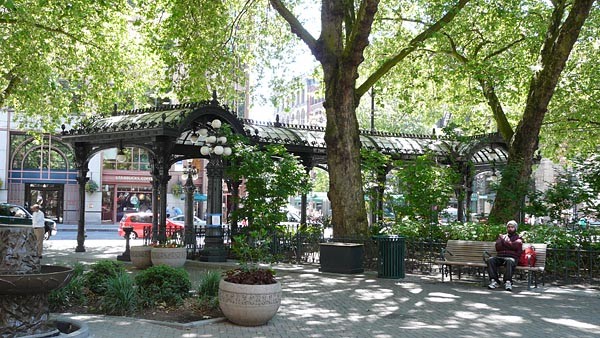
Pioneer Square neighbourhood boundaries
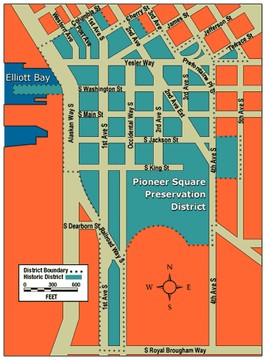
This photo of the Pioneer Square Building was taken about a decade after its completion.
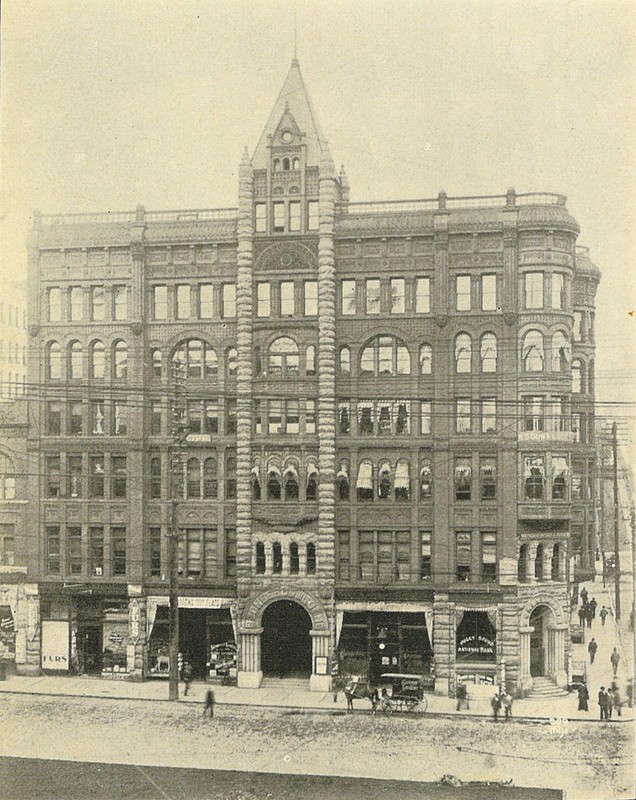
Backstory and Context
Text-to-speech Audio
Pioneer Square was founded in 1854 by the first white settlers to reach the Puget Sound region. After spending six months in the settlement at Alki Point (what is currently known as West Seattle), the Yesler party, lead by Henry Yesler, opened a steam sawmill where First Avenue and Yesler Way meet today. The hills that surround Pioneer Square were used to roll logs into the growing city, and wooden buildings began to line Seattle’s first road, known then as Commercial Street (now known as First Avenue).
In 1889 the Great Seattle Fire burned nearly the entire settlement down. At that time, Seattle was the largest city in Washington with nearly 50,000 residents. In the next decade, a series of brick and stone buildings were developed in their place. However, these buildings were constructed into the hills surrounding the area, with one upper door, and one lower. Years later, when the streets were raised, the lower level of the buildings were blocked off. The result was the creation of what is now known as "Seattle Underground," a network of underground passageways and basement entrances. Many of these buildings still comprise the historical neighborhood boundaries and remain some of the country’s finest examples of 19th century Richardsonian Romanesque architecture.
In last decade of the 1800s, the city was flooded with travelers hopeful to find gold in the Klondike Gold Rush. Thousands of people known as “stampeders” advanced on the city as they prepared to travel north. This spurred an economic prosperity that continued to propel the western city forward. In 1914 the Smith Tower was built and became the tallest building west of the Mississippi River.
However, economic transitions caused attention to be drawn away from Pioneer Square as businesses moved uptown. Today the area is a protected historical zone. Preservation efforts remain in place to protect the buildings and features that symbolize the city’s beginning. Pioneer Square is now a residential and commercial area, and the presence of Seattle sports stadium’s brings tourists into the region. It is also often the topic of gentrification, as the balance between socioeconomic status residents remains evident.
The Pioneer Building is the anchor of one of the most historically significant neighborhoods in Seattle. The Pioneer Square neighborhood is located on the edge of Elliot Bay, on the southwest edge of downtown. The first neighborhood in the city that would become Seattle, Pioneer Square was largely abandoned by the 1980s and many avoided the neighborhood. Today, Pioneer Square is a landmark destination and the entire neighborhood is listed on the National Register of Historic Places. The series of buildings that define the neighborhood’s loose boundaries display late 19th-century architecture, that today serve as storefronts, shops, restaurants, museums, cafes, and apartments.
